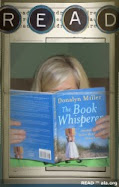Section 22 of Spilling Ink is a brief one dedicated to audience. Anne Mazer advises young writers to "reserve a tiny corner of your brain" for an audience.
We mention audience when we work with students. When test time rolls around, we talk about prompt writing and RAFTS (Role, Audience, Format, Topic, Strong verb). But on a day-to-day basis, WE become the audience. I don't think this works very well because kids end up writing what they think WE want to hear. It even happens to us as adults. Just recently I was in a workshop and we were asked to share our written work. Without even thinking about it, prior to sharing, I said, "I'm not sure if this is what you are looking for...." I wasn't writing for me or for the other folks in that room. I was writing for the teacher.
If we want our students to enjoy writing and to have an authentic writing experience, we need to help them find an audience other than us. Lucky for us, the internet gives us countless opportunities to do just that.
Blogs: Having a class blog is an amazing way to have your students publish their pieces on a regular basis and to get feedback from a larger audience. Parents will be thrilled to be able to read their child's work and comment from home. (Remember yesterday when I mentioned flow? One condition for attaining flow is to get feedback. That feedback doesn't have to come from us. Receiving a comment on a blogpost gives immense gratification.) Go to http://www.blogger.com/ for step by step instructions for setting up a blog.
Wikis: Wikis are similar to blogs, but they provide a more collaborative environment. Check out http://www.pbworks.com/.
Collaborative Storytelling: At Storybird, Big Universe, or ReadWriteThink's Comic Creator, your students can match their stories with pictures to create an online piece.
Online Magazines: Sites like LaunchPad and Cyberkids publish student written stories, poems, and articles. Here is an extensive list of places students can publish online.
There are loads of amazing ways out there to allow our students to reach different audiences. Your challenge is to find the one that works for YOU and your students. As long as young writers keep an audience in mind, and work hard to bring the pictures in their brains to the brains of their readers, they will grow as writers.




No comments:
Post a Comment